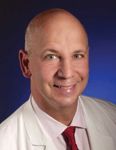- Case-Based Roundtable
- General Dermatology
- Eczema
- Chronic Hand Eczema
- Alopecia
- Aesthetics
- Vitiligo
- COVID-19
- Actinic Keratosis
- Precision Medicine and Biologics
- Rare Disease
- Wound Care
- Rosacea
- Psoriasis
- Psoriatic Arthritis
- Atopic Dermatitis
- Melasma
- NP and PA
- Skin Cancer
- Hidradenitis Suppurativa
- Drug Watch
- Pigmentary Disorders
- Acne
- Pediatric Dermatology
- Practice Management
- Prurigo Nodularis
- Buy-and-Bill
Article
Transplanting tissue: CTA programs move ahead at two U.S. hospitals
Although they've garnered little publicity, composite tissue allotransplantation (CTA) programs based at two Eastern U.S. hospitals are steadily progressing, with plans for face and other composite-tissue transplants, their leaders say.

Key Points

At the University of Pennsylvania, "We're getting ready to initiate a CTA program. We are primarily interested in face transplants," though the program likely will consider all CTA possibilities, says Joseph Serletti, M.D., professor of surgery, chief of plastic surgery and head of the university's CTA program.
To that end, the university has drafted a protocol, now in the final stages of institutional review board (IRB) approval, that would allow it to remove and replace the facial tissue of a living donor deemed unsuitable for tissue donation to other patients, Dr. Serletti tells Dermatology Times.
The idea came from the organ procurement organization's director, he says.
"He's not a physician, but it's a great idea," Dr. Serletti says. "When I presented it to other folks who are gearing up to do facial transplantation, they all remarked that they had not thought of that. It's a powerful way to truly prepare oneself to do this operation."
While finding a volunteer won't be easy, he says, "With the support of our OPO (organ procurement organization), it will happen."
At Duke University, "We've been interested in CTA since Warren Breidenbach, M.D., performed the first hand transplant in 1999," says L. Scott Levin, M.D., chief of plastic, reconstructive, oral and maxillofacial surgery at Duke University Medical Center.
For the past five years, the university has performed basic research in animal models and cadavers. At press time, the program had a CTA program under IRB review.
"We will start with patients who need abdominal wall reconstruction and are already on immunosuppression, but we hope to move quickly to face and hand transplants once our IRB approves us" for the abdominal wall indication, which could occur by year's end, Dr. Levin says.
Currently, Duke is investigating the immunologic load of a second transplant in patients who are already immunocompromised, he says.
Dr. Levin says that while it's not currently feasible to put a patient with squamous cell cancer on immunosuppression, "If we are able to develop protocols for cellular therapy that eliminate the need for immunosuppressive drug therapy, we may be able to do transplants even in cancer patients."
This research aims to create chimerism, perhaps through use of bone marrow transplants or marrow replacement therapies, he says.
When such therapies succeed, Dr. Levin says, "Bone marrow from the donor sets up housekeeping in the recipient. After awhile, the recipient doesn't recognize the transplant as foreign."
To help advance CTA, Drs. Levin, Serletti and W.P. Andrew Lee, M.D., who heads the University of Pittsburgh's face transplant program, formed the American Society for Recon-structive Transplantation (ASRT).
In July, the ASRT held the first U.S. meeting devoted to this topic. Dr. Lee declined to be interviewed, but Dr. Levin says the University of Pittsburgh's program is conducting research in a swine model.
The ASRT meeting drew 200 participants, including members of the two French face transplant teams and representatives of many major U.S. plastic surgery centers, Dr. Serletti says.
In previous hand or face transplantation meetings he's attended, he says, "The prevailing mood - even among fairly progressive surgeons - was, 'Will this ever happen on a routine basis?'"
However, he says, the ASRT meeting wasn't about if such transplants will happen, but about how and when.
"In five years," Dr. Levin says, "we will routinely be doing CTAs for a variety of traumatic and reconstructive needs in adults and children, with high rates of success."
Disclosures: Drs. Levin and Serletti report no relevant financial interests.
For more information: http://www.a-s-r-t.com/ http://www.donors1.org/





